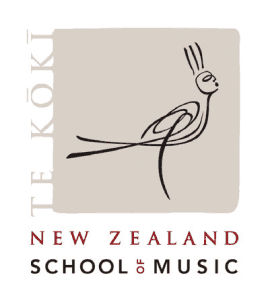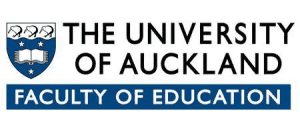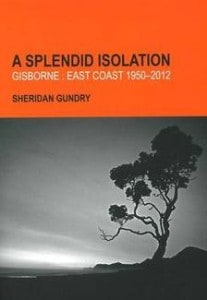
Find out more here.

Find out more here.



Sonidos Para La Vida (Sounds for Life) is a Guatemalan organization dedicated to changing the lives of boys and girls in risky situations. The principal mission is PREVENTION through MUSIC. Dr. Richards has provided a grant for the children in this program.
To find out more about the program click here.
The children, from economically disadvantaged communities, are studying English with Jack’s support in Antigua. They also receive free music lessons from their teacher – Edwin Ruiz, who has worked with children for over 30 years.
The children recorded this thank you video for Jack.
Submitted by SM Hosseini, Iran
We have only a session (75 minutes) in a week to teach English in junior schools and are asked to use CLT as the approach? What is your view?
It is not possible to learn a language with only 75 minutes a week of classroom input. Under those circumstances very specific and restricted targets should be established, in terms of what is reasonable to expect in terms of vocabulary acquisition, reading, and so on. CLT is a general approach that is based on the principle that one learns a language through communication and that classroom activities should involve interaction and communication through English. However a reasonable level of proficiency is needed before this is possible so it would be unrealistic to expect CLT principles to be very effective in these circumstances. Perhaps reading ability would be a more realistic goal.

You can read more about the project here and here and get updates here.
The 1971 article A Non-Contrastive Approach to Error Analysis is now available.


Previous prize winners at this prestigious competition have included Lang Lang and Yuja Wang.
See here to watch Joshua’s winning performance.
See here for more about the competition.
Submitted by Arwa Abdelhamid, The United Arab Emirates
What are some positive elements of language teaching and learning that a non-native English speaking teacher can bring to the ESL/EFL classroom?
His or her understanding of the cultural and linguistic background of the learners will be very useful, as well as his or her experience as a second or foreign language learner.
Submitted by Maria Giselle Agustin, Philippines
What are the criteria in preparing instructional materials for language courses?
The following issues need to be addressed and how they are answered will determine the design for the instructional materials.
Submitted by Jun Clifford M. Mape, Philippines
What are some of the issues involved in teaching speaking for interactional versus transactional purposes?
Small talk and conversation are examples of interactional talk, which refers to communication that primarily serves the purpose of social interaction Small talk consists of short exchanges that usually begin with a greeting, move to back-and-forth exchanges on non-controversial topics, such as the weekend, the weather, work, school, etc. and then often conclude with a fixed expression, such as See you later. Such interactions are at times almost formulaic and often do not result in a real conversation. They serve to create a positive atmosphere and to create a comfort zone between people who might be total strangers. Topics that are appropriate in small talk may differ across cultures, since topics that are considered private in some cultures (e.g. marital status or religion) can be considered as appropriate topics for small talk in other cultures. While seemingly a trivial aspect of speaking, small talk plays a very important role in social interaction. Learners who cannot manage small talk often find they come away from social encounters feeling awkward, or that they did not make a good impression, and, consequently, may avoid situations where small talk is required.
Skills involved in mastering small talk include:
One of the most important aspects of conversation is managing the flow of conversation around topics. Whereas topics are only lightly touched on in small talk, as we noted above, conversation involves a joint interaction around topics and the introduction of new topics that are linked through each speaker’s contributions. The skills involved include:
Agenda management and turn-taking are also important features of small talk and conversation. The former refers to the participant’s right to choose the topic and the way the topics are developed, and to choose how long the conversation should continue. This includes strategies for opening, developing and closing conversations, and for introducing and changing topics. This process is often jointly managed by the participants, depending on the social relationship between them (e.g. teacher– student, friend–friend, employed–employee). Turn-taking involves providing opportunities for another person to take a turn in speaking and recognizing when another speaker is seeking to take a turn.
Another important communication skill is the ability to use English to accomplish different kinds of transactions. A transaction is an interaction that focuses on getting something done, rather than maintaining social interaction. (In communicative language teaching, transactions are generally referred to as functions, and include such areas as requests, orders, offers, suggestions, etc.) A transaction may consist of a sequence of different functions. Two different kinds of transactions are often distinguished. One type refers to transactions that occur in situations where the focus is on giving and receiving information, and where the participants focus primarily on what is said or achieved (e.g. asking someone for directions or bargaining at a garage sale). The second type refers to transactions that involve obtaining goods or services, such as checking into a hotel or ordering food in a restaurant. Talk in these situations is often information- focused, is associated with specific activities and often occurs in specific situations. The following are examples of communication of this kind:
Transactional activities can be thought of as consisting of a sequence of individual moves or functions which, together, constitute a ‘script’. For example, when people order food in a restaurant, they usually look at the menu, ask any necessary questions and then tell the waitperson what they want. The waitperson may ask additional questions and then repeat their order to check. When people check into a hotel, the transaction usually starts with a greeting, the clerk enquires if the person has a reservation, the client confirms and provides his or her name and so on.
In using language in this way, the goal is to carry out a task. Communicating information is the central focus, and making oneself understood, unlike small talk or conversation, where social interaction is often as important as what the participants actually say. In addition, the language used in carrying out transactions is often predictable, contains many fixed expressions and routines, and, as we noted in the earlier example, and may contain elliptical or short forms instead of fully-formed sentences ,since transactions can often be performed using key words and communication strategies, but not necessarily employing grammatically appropriate language. Communication strategies are tactics learners use to compensate for limitations in their linguistic skills and that enable them to clarify their intentions, despite limitations in grammar, vocabulary or discourse skills.
The skills involved in using English for transactions thus include:
Submitted by Zainab Jaafar, Iran
I’m working in a scientific research centre in which the majority of the staff have very limited capacity in English language. This is due to receiving their undergraduates syllabus in the mother language (i.e. Arabic).
I am planning to start a unit for developing their English qualifications. I would like to have your advice in where & how to start, taking in consideration their different specializations such as chemistry, physics, invertebrates, geology, and biology.
I would suggest starting with a general English course to bring up their proficiency to at least a B1 on CEF. Then you could move to more of an ESP approach. A very good resource to use would be Helen Basturkmen’s book, Developing Courses in English For Specific Purposes.
Submitted by Paresh Kumar Bhoi, India
1.What goes into the pre-service training of a language teacher at the elementary level?
2. What skills and knowledge-bases are required to be a part of a pre-service teacher training programme at the elementary level?
Teacher training normally involves providing novice teachers with the practical skills and knowledge needed to prepare them for their initial teaching experience. Teacher training involves processes of the following kind:
Training involves the development of basic concepts, theories and principles and a repertoire of teaching skills, acquired through observing experienced teachers and engaging in practice-teaching in a controlled setting, e.g. through micro-teaching or peer teaching. Taking this perspective, good teaching is seen as the mastery of a body of basic knowledge and a set of skills or competencies. Qualifications in teacher training such as the CELTA (Certificate in English Language Teaching to Adults) are typically offered by teacher-training colleges or by organizations such as the British Council, and provide novice teachers with a recognized entry-level qualification as an ESL/ELT teacher. The worldwide demand for qualifications of this kind has led to the development of many courses, available both in face-to-face formats or online. For example, the Teaching Knowledge Test (TKT) is a test developed by Cambridge English Language Assessment for teachers of English to speakers of other languages. The TKT tests knowledge of concepts related to language, language use and the background to and practice of language teaching and learning. TKT consists of three core modules: language and background to language learning and teaching; lesson planning and use of resources for language teaching; and managing the teaching and learning process. There is also a practical module and a further three specialist modules (Knowledge About Language, CLIL, Young Learners).
Teacher development serves a longer-term goal and seeks to facilitate growth of the teacher’s general understanding of teaching, of the teaching context and of his or her performance as a teacher. It is often the focus of in-service education. It thus builds on the initial knowledge and skill base acquired through teacher training. One aspect of teacher development involves developing a deeper understanding of the knowledge base of language teaching. This has typically meant mastering the discipline of applied linguistics and developing a more advanced and theory- based body of knowledge, not linked to a specific teaching context. Applied linguistics encompasses the language-based subjects (e.g. grammar, phonology, sociolinguistics, discourse analysis), the learning-based subjects (e.g. second language acquisition, psycholinguistics, learning strategies), the teaching-based subjects (e.g. methodology, teaching the four skills) and the curriculum-based subjects (e.g. course design, materials design, assessment). Another dimension of teacher development, however, deals with the examination of different dimensions of one’s own practice as a basis for reflective review, and that can hence be seen as practitioner-driven. Qualifications in teacher development such as the DELTA course or an MA degree, are offered by training organizations and universities and are intended for teachers who have already developed their practical teaching skills and now wish to acquire the theory and knowledge base that supports these skills. Many such courses today are also available online or in distance mode, to suit the circumstances of the many practising teachers who are unable to take time off for full-time study.
Submitted by Nawal Amerioui, Algeria
It is said that CBLT is out-come oriented, yet they say that it is process-driven. Is really the focus of this approach on process or product?
Competency-based language teaching is an example of an out-come based approach, or an example of backward design. See the article Curriculum Approaches in Language Teaching for more information.
Submitted by Eliana Santos de Souza, Brazil
How do you do contrastive analysis of the written texts ( first draft, second draft or revising, and editing) produced by students in the process writing in EFL?
Contrastive analysis has no role to play here. If you wish to see how a student has modified a piece of wiritng during the different stages of the composition process, then you should look at the different aspects of writing that are involved. The different kinds of knowledge and skills learners need to acquire to become effective writers are summarised by Ken Hyland (Second Language Writing: Cambridge University Press 2003) as follows:
Submitted by Jamal Zakeri, Iran
How important is the teacher’s book in teaching?
A good teacher’s book lays out the basic principles of the coursebook and the recommended procedures for using the book. As such is it a guide for teachers, particulalry novice teachers who may have little teacher training or classroom experience. It is like the instruction manual that comes with a new car. Once you are familiar with the car you won’t need to consult the manual very often. However with a course book the situation is a little different, since books are used in many different contexts and the information in the teacher’s book is likely to be very general and may need to be adapted to match the specific school context. It should be regarded as a springboard to support creative teaching rather than a straight-jacket.
Submitted by P.B.S.Krishnam Raju , India
Could you please suggest procedures to teach a British Accent to Advanced Level students?
I assume the issue here is the wish for learners to modify the “Indianness” of their accent in English? Not everyone would agree that this is a necessary goal in language learning, since one’s accent is a marker of one’s cultural identity. However sometimes a strong regional or national accent my impede understanding in some contexts, hence the basis for your question. In order to address this isse the starting point is a diagnostic profile of the chracteristicss of the learners’ current pronunciation. This is often done with a combination of measures, such as reading aloud, an interview, and participation in communication tasks. This will enable identification of core aspects of pronunciation that may need to be modified, whether these be vowels, consonants, or suprasegmentals. Then speciifc features need to be addressed one at a time, over a period of time, using the usual procedures found in pronunciation manuals. It is important to realize that in addressing difficulties with pronunciation, learners first need to notice the problem, they then need to understand how the sound feature is produced, and then need practice activities that move from controlled to freer practice.
Jack Richards provides a grant to enable young people in economic difficulty take English courses at the Modern American English School in Antigua, Guatemala. The pictures show some of the recipients of recent grants, together with school director Patricia Ruiz (in pink!) and one of the MAES teachers.
This slideshow requires JavaScript.